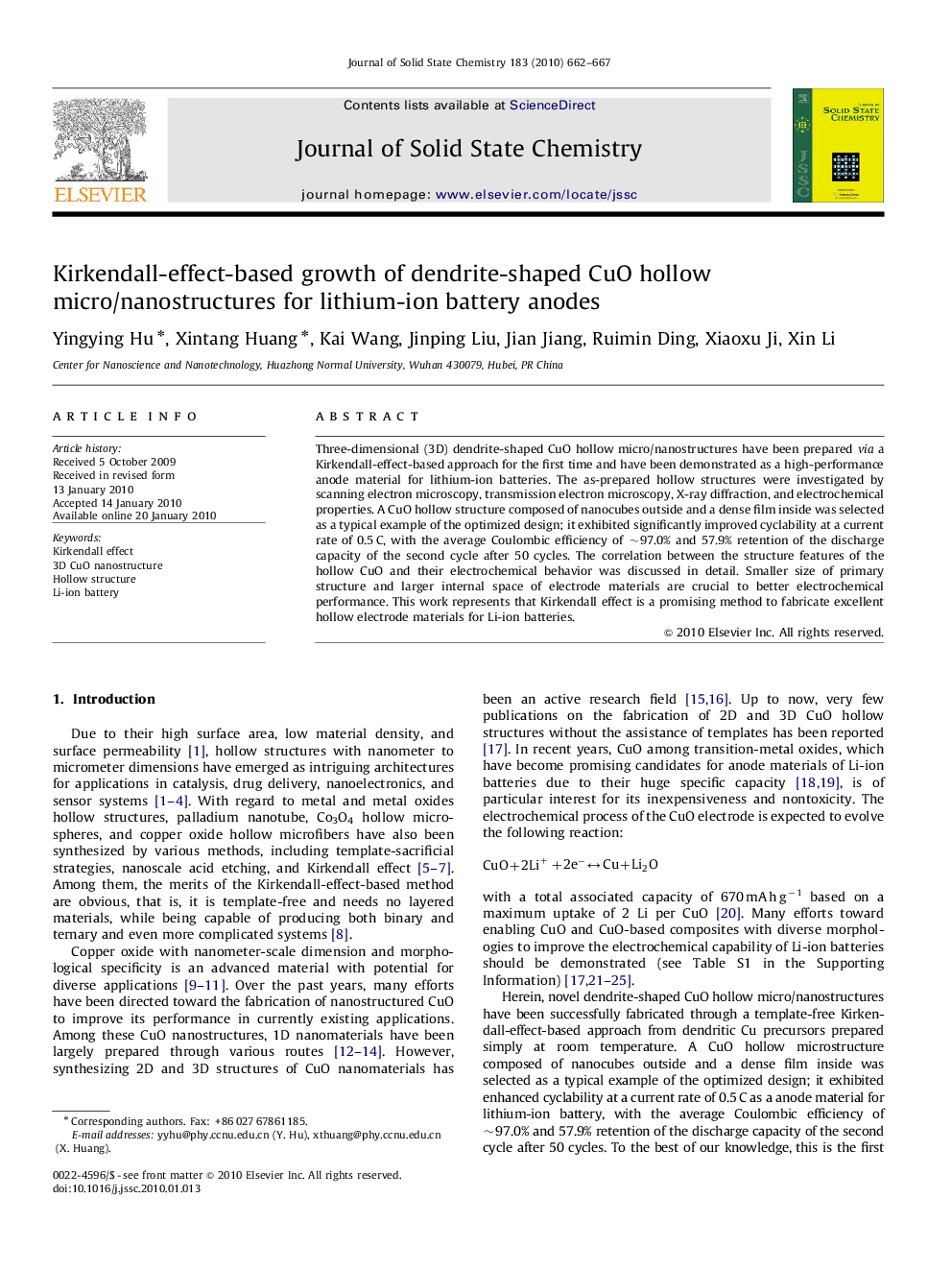| Article ID | Journal | Published Year | Pages | File Type |
|---|---|---|---|---|
| 1330787 | Journal of Solid State Chemistry | 2010 | 6 Pages |
Three-dimensional (3D) dendrite-shaped CuO hollow micro/nanostructures have been prepared via a Kirkendall-effect-based approach for the first time and have been demonstrated as a high-performance anode material for lithium-ion batteries. The as-prepared hollow structures were investigated by scanning electron microscopy, transmission electron microscopy, X-ray diffraction, and electrochemical properties. A CuO hollow structure composed of nanocubes outside and a dense film inside was selected as a typical example of the optimized design; it exhibited significantly improved cyclability at a current rate of 0.5 C, with the average Coulombic efficiency of ∼97.0% and 57.9% retention of the discharge capacity of the second cycle after 50 cycles. The correlation between the structure features of the hollow CuO and their electrochemical behavior was discussed in detail. Smaller size of primary structure and larger internal space of electrode materials are crucial to better electrochemical performance. This work represents that Kirkendall effect is a promising method to fabricate excellent hollow electrode materials for Li-ion batteries.
Graphical abstractSEM images of 3D dendrite-shaped CuO hollow micro/nanostructures prepared via a Kirkendall-effect-based approach have been shown. The as-prepared CuO electrode exhibited significantly improved cyclability for Li-ion batteries.Figure optionsDownload full-size imageDownload as PowerPoint slide
